|
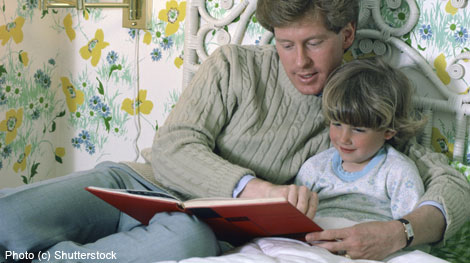
Twelve Reasons to Read Aloud to Your Children
By Cathy Cuthbert
Many – if not most – parents read to their young children as a matter of course and then stop reading to them when they reach school age. They stop, I suppose, because they don’t see the need to read aloud once their children have been handed over to the so-called expert reading instructors or once they can read for themselves. But there are benefits to reading aloud to your children no matter their age.
Reading Aloud is for Children Who Have Difficulty Reading
Children who have been removed from unhappy school situations often have trouble reading. Typically, the schools attached some damaging label to these children such as dyslexia, ADD, ADHD, or whatever the Education Establishment can dream up. These children are not incapable of learning to read, however, the joy of reading has been taken from them and sometimes even the joy of being read to has been taken, as well. If this describes your child’s experience, you may need a bit of patience to help him but you needn’t despair. Make the commitment to read aloud to him every day.
In the beginning, be careful to choose topics that interest your child and books that are good for reading aloud. Match the book to their intellectual rather than reading level. Determine the time of day they are most able to sit with you, then get comfortable together and read. If their attention span is short, make the sessions short at first, gradually lengthening them. If they don’t like the book you chose, pick another. Resist the temptation to test their reading ability or make them read to you. Stick to your daily commitment and simply enjoy a good book and your time together.
The idea behind this daily read-aloud is to reawaken our child’s love of stories; that will, in turn, lead to a love of reading. To undo the damage done by reading instruction, don’t instruct. Draw them in without pressure, on their terms and using their interests. View your role as rescuing them from a trained aversion and awakening in them the uniquely human power of literacy. You will be introducing them to the evocative, enticing world of imagination through literature. There is no need to push; you need merely show the way.
There are people who never develop a taste for reading. I suspect most were forced to read before they were ready or were discouraged by their school experience. But what if your child truly doesn’t like to read? Is this really a disaster, every parent’s nightmare? Hardly.
There are plenty of vocations and avocations your child can pursue without being an avid reader. Not everyone is an intellectual and the truth is that the non-intellectuals among us are not necessarily doomed to dull, empty lives of drudgery. Besides, modern technology offers many alternatives to reading for obtaining information: audio books and courses, computers that read to us, online instruction, and so forth.
Reading Aloud is for Everyone
What if your child has no reading problem? Reading aloud is still for them. My daughter began reading before the age of four, yet we continued to read together through her teen years. Not having a television, reading aloud was our main family entertainment. We read for two to four hours a day. I chose classic literature that was typically beyond my children’s reading ability. For example, C.S. Lewis’s Narnia series and James Gurney’s Dinotopia books held our son’s rapt attention when he was just four, as did Robinson Crusoe and The Song of Hiawatha when he was five. Later on, we read rousing adventure stories and plays, both genres created for reading aloud.
Every family can benefit from the read-aloud habit. Here are twelve reasons why.
1. Reading Aloud Is the Most Effective Reading Instruction. Pressure on children to learn, especially before they are able, creates anxiety that blocks learning. This is the premise of John Holt’s insightful book How Children Fail. The American practice of beginning instruction too early has been shown by researchers such as Raymond and Dorothy Moore (Better Late than Early) to be damaging. With reading aloud, there is no pressure on your child, yet they are exposed to books in anticipation of when they are ready to begin reading.
2. Reading Aloud Saves Young Children’s Eyesight. The Moores also note that close work for long periods by children under eight leads to myopia. With reading aloud, your young child will be able to enjoy literature without damaging their eyes.
3. Reading Aloud Provides Time for Close Physical Contact. Since we recognize that babies need physical contact to thrive and the elderly need physical contact to avoid depression, isn’t it reasonable to assume that physical contact for people of all ages is beneficial, in fact necessary? Sharing a good read together is an excellent time for a long, therapeutic snuggle that will nurture you as well as your child.
4. Reading Aloud Builds Vocabulary and Teaches Proper Grammar. Most children today are institutionalized quite early, isolated with children their own age so that their exposure to adult speech is limited. Even many home-educated children watch television for long periods, where the spoken language is not quite the Queen’s English. Reading aloud is an antidote, providing an example of proper speech so that children will develop adult vocabulary and speech patterns. Also, since the written vocabulary is larger than the spoken one, reading aloud exposes children to many words that they will not encounter at all in conversation. Further, reading aloud introduces vocabulary in the most effective way — contextually. The subtleties of connotation are presented in a manner that no vocabulary list can match.
5. Reading Aloud Stimulates Your Child’s Imagination. All of us have had the experience of reading a wonderful book, then seeing the movie version only to be very disappointed because the characters didn’t look or act the way we had envisioned. This experience illustrates the difference between the camera and books. The former is prescriptive and at times limits the possibilities for imagination while the latter is descriptive and stimulates the imagination. Children use stories as the starting point for their own make-believe, playing dress-up, acting out episodes, and developing further adventures.
6. Reading Aloud Provides an Alternative to Television. A discussion of the dangers of television can be found in Marie Winn’s The Plug-in Drug. Jim Trelease also tackles the subject in The New Read Aloud Handbook. There is little to add other than to say that, if anything, these authors understate the damage habitual TV viewing does to children and families. In my opinion, the single most effective action you can take to strengthen your family relationships is to throw out your television.
7. Reading Aloud Provides Shared Family Experiences. Many episodes from the books we’ve read have become in-jokes for our family, while certain characters have become archetypes – Scrooge, of course, for an old miser, Phileas Fog for typical British flegm.
8. Reading Aloud Creates New Family Traditions. My sister read A Christmas Carol aloud to her children every year, and we do the same with ours. We added reading the true story of the first Thanksgiving. Through reading aloud, you can create your own holiday traditions, your way of celebrating special days together, and evolving your unique family character.
9. Reading Aloud Exposes Children to the Lives of People in Other Circumstances and Other Cultures. Through reading Laura Ingalls Wilder’s Little House on the Prairie series and its depiction of a homesteading family, my children gained a sense of how difficult life used to be and an appreciation for the comforts modern technology affords. The same is true for Walter Edmonds’ stories of colonial times, Marjorie Kinnan Rawling’s The Yearling, L.M. Montgomery’s Anne of Green Gables and Elizabeth Borton de Treviño’s My Heart Lies South. The possibilities to learn about other cultures are as wide as your choice of books to read aloud.
10. Reading Aloud Presents Life’s Lessons for Discussion. All the great questions of life and love and death are in the pages of classic literature. We spent at least as much time discussing the moral choices of fictional characters as we did reading their books. There is more truth and insight about the human condition in one classic novel than in a library full of non-fiction.
11. Reading Aloud Provides an Emotional Outlet. We laughed, we cried, we fell in love, we raged at injustice – all in the pages of the books we read together. Our daily trials are put on hold for a few hours while we entered a world of emotional release.
12. Reading Aloud Is a Great Excuse for You to Read All That Great Children’s Literature You Missed When You Were a Child.
What to Read Aloud
If you are looking for a list of good read-alouds, think of all the books referred to as classics and start with these. There is a reason these works are known as “classics” and have been read and enjoyed by generations of children and parents alike.
If you need a written list, look for The Read-Aloud Handbook by Jim Trelease (Penguin Books, 2013). The last chapter of this book is 150 pages of read-aloud suggestions. Trelease stresses that his list in not intended to be comprehensive and it certainly isn’t, since he has omitted many classics that are found in school curricula. He has a website that includes “The Treasury of Read-Alouds.”
The Caldecott and Newbery Award books are another source of excellent read-alouds. The Newbery Award has been around since the 1920s, the Caldecott since 1930s. Your local library should have a list of these books.
Your library likely also will have reference books that list classic literature, often with synopses and information about the authors. Our library, for example, has What Do Children Read Next?: A Readers Guide to Fiction for Children, which lists the best books for children ages six through thirteen. Approximately half the listings are recent books and half are older classics. The book cross-references the many titles by awards received, time period, geography, subject, age level, author, illustrator, and other books you might like.
Another source of ideas for reading aloud is The Horn Book. Your local children’s librarian might subscribe to this monthly, although your library may not have it for patrons to read. Ask to have a look at it. If you can skip the ads in the front of each edition, which tend to be politicized, and make your way to the reviews, you will find that the books covered are generally of better quality. The reviews will help you make informed choices. You can also visit their Horn Book Online Guide, a subscription service that includes a database of over eighty thousand online reviews.
When all else fails, type “read-aloud list for children” into your search engine and you will not be disappointed. Among others, you will find lists from Goodreads and Read Aloud America.
You don’t have to rely on published lists and someone else’s opinion to find good read-alouds. The best way to determine if a book is appropriate is to preview a couple of chapters. Then, as you begin reading it together, notice how your children respond. They will let you know if the book you’ve chosen works for reading aloud or not. Trelease cautions parents to consider the emotional level at which a book is pitched. For example, we began reading Howard Pyle’s Tales of Pirates and Buccaneers when my children were young, but had to stop because my son became quite upset at the violence among those cutthroats. Of course, today, he would find it much too tame.
Don’t overlook poetry, short stories, humor, and magazines. When our children hit the teen years and were busy studying all day, we still read aloud after dinner, but then it was usually Dave Barry and some of the more outrageous letters to the editor from Countryside Magazine and Small Stock Journal.
I invite you to join our family in reviving an old tradition, not quite as ancient as homeschooling itself, but every bit as venerated before the days of television and the Internet. Read aloud to your children, share with them the joy of literature and prepare them for the day when, in your dotage, they will read aloud to you.
Learn More
Reading Magic: Why Reading Aloud to Our Children Will Change Their Lives Forever by Mem Fox (Harcourt, 2008)
Hey! Listen to This: Stories to Read Aloud by Jim Trelease (Penguin Books, 1992)
What To Read When: The Books and Stories to Read with Your Child — And All the Best Times to Read Them by Pam Allyn (Penguin Group, 2009)
Cathy Cuthbert is a former homeschooling mother of two and a liberty advocate living on California’s central coast.
Copyright © Life Media
Privacy Policy
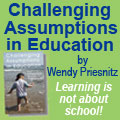 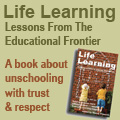 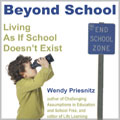
 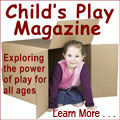 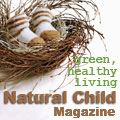
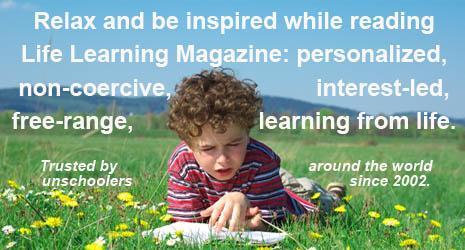
|

